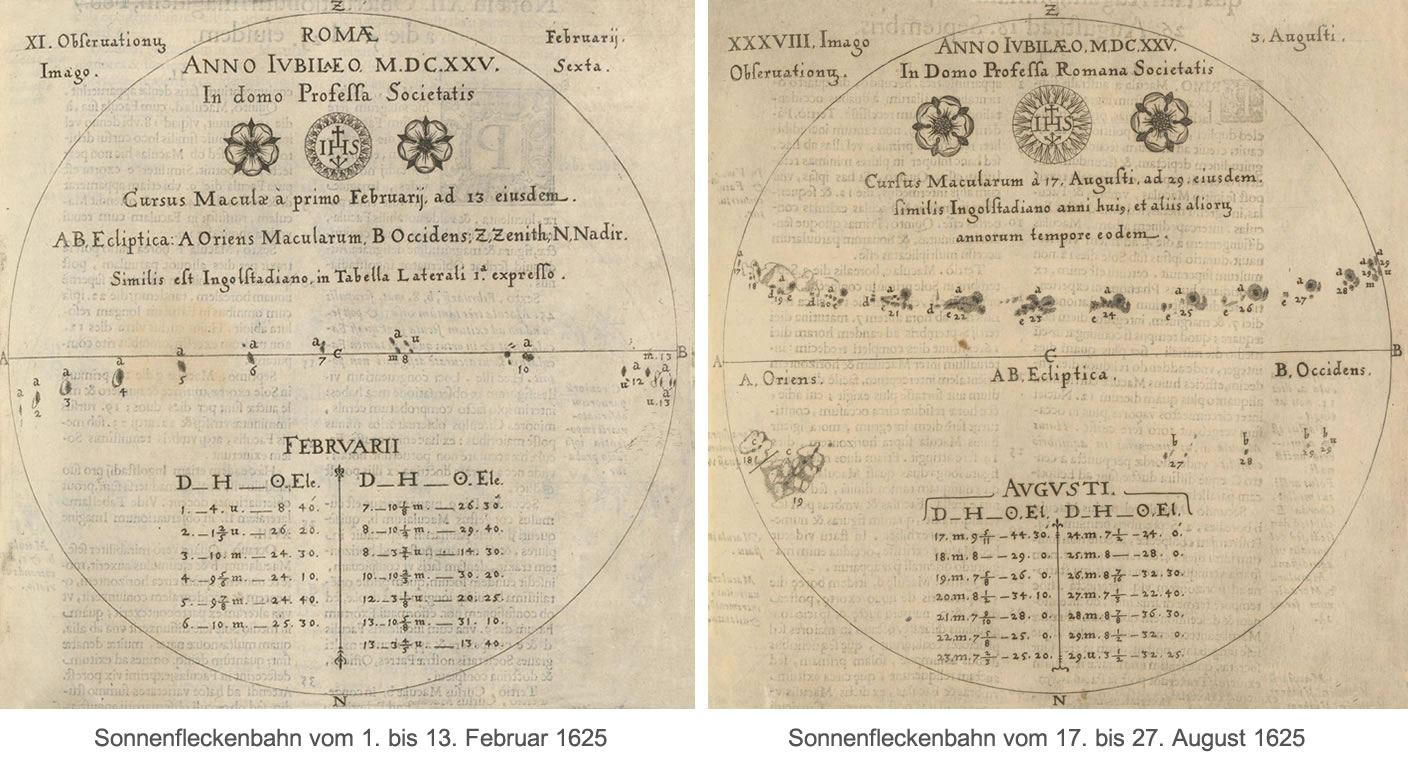Rosa Ursina – Sunspot paths

Printing of external page "Rosa Ursina", written by Christoph Scheiner, took a good four years, ending in June 1630. In the same timespan Galileo was preoccupied with publication of the external page "Dialogue". The Rosa Ursina is dedicated to Paolo Giordano Orsini in whose printing plant in Bracciano the monumental work was realised.
The title's translation reads:
"Rosa orsina (since it is dedicated to an Orsini), or about the Sun, which shows itself to be changeable thanks to the wonderful phenomenon of its flares and spots, and also rotates in the course of a year along a fixed axis from west to east around its own midpoint and completes a revolution along an axis, which can move because of its poles, from east to west in just under a month."
New findingson sunspots
The Rosa Ursina reveals the following discoveries
- The paths of sunspots vary as the seasons change
- These variations are explained using the relationship of the incline in the Sun’s axis to the level of ecliptic
These findings are based on Scheiner's years of observations and meticulous records at the Collegio Romano and at other Jesuit schools in Europe. They are reproduced in tables in which individual or groups of sunspot paths are shown in a kinematic fashion. Encouraged by his observations, Scheiner was sharply critical of Galileo since he had asserted in his Lettere solari ("Solar letters") of 1613 that sunspots moved around parallel to the level of the ecliptic.
Extravagance of sunspot paths

On the Third Day of Galileo's Dialogue, Salviati claims that he can remember a personal meeting with Galileo in his country house. Galileo, recounts Filippo Salviati, had established that monthly sunspot paths did not run parallel to the ecliptic but were "extravagant". And Galileo had then given his ingenious heliocentric explanation for this "extravagance".